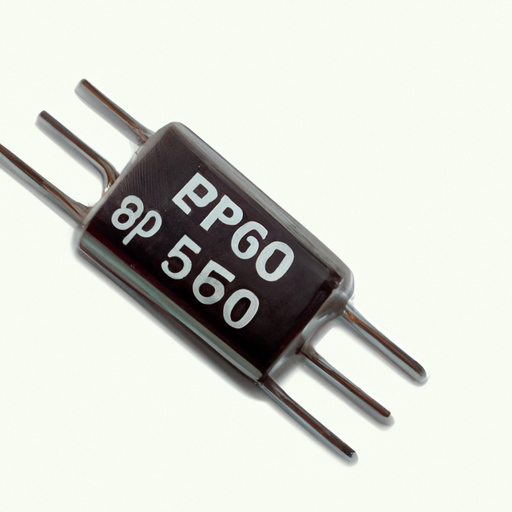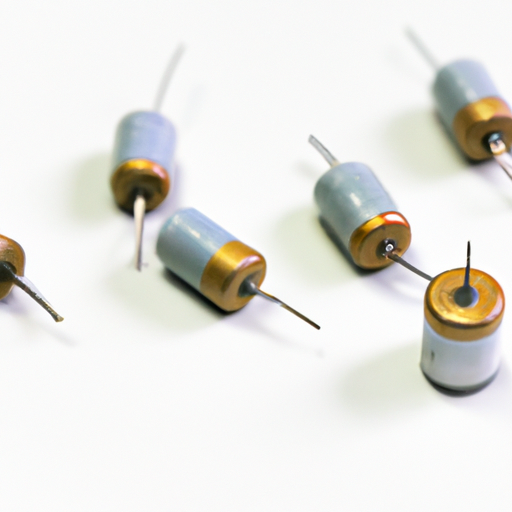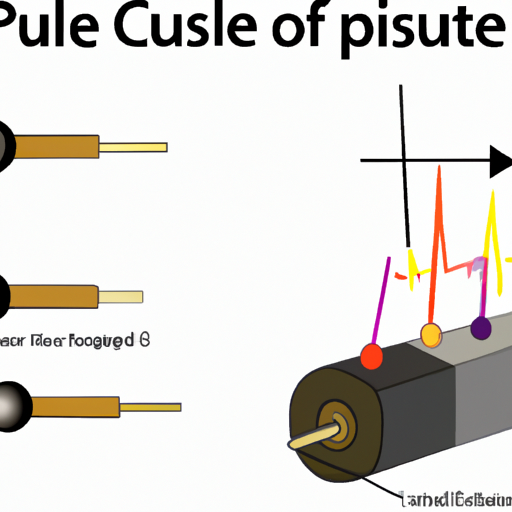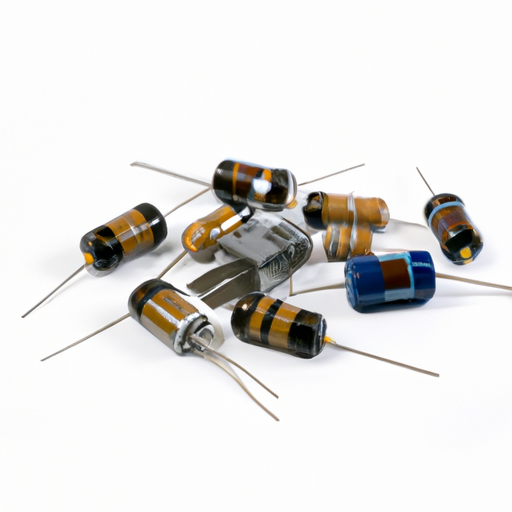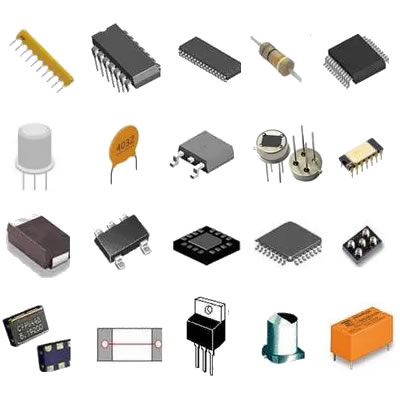What are the main applications of capacitor symbols?
What are the Main Applications of Capacitor Symbols?
I. Introduction
Capacitor symbols are essential elements in the world of electronics, serving as visual representations of capacitors in circuit diagrams. These symbols not only convey critical information about the type and function of capacitors but also facilitate communication among engineers and technicians. Understanding capacitor symbols is crucial for anyone involved in electronics, from students to seasoned professionals. This blog post will explore the main applications of capacitor symbols, highlighting their significance in circuit design, power electronics, consumer electronics, industrial applications, and education.
II. Understanding Capacitor Symbols
A. Basic Components of Capacitor Symbols
Capacitor symbols are standardized graphical representations used in schematic diagrams. They typically consist of two parallel lines, representing the plates of the capacitor, with a gap between them. The orientation and additional markings can indicate the type of capacitor, such as polarized or non-polarized.
1. **Representation of Different Capacitor Types**: Different types of capacitors have unique symbols. For instance, an electrolytic capacitor is often represented with a curved line on one side, indicating its polarity, while a ceramic capacitor is depicted with two straight lines. This differentiation is crucial for engineers to quickly identify the components in a circuit.
2. **Standardization of Symbols in Circuit Diagrams**: The standardization of capacitor symbols ensures consistency across various documentation and design tools. This uniformity allows engineers to interpret circuit diagrams accurately, regardless of the source.
B. Common Types of Capacitors
Capacitors come in various types, each with distinct characteristics and applications. Some of the most common types include:
1. **Electrolytic Capacitors**: Known for their high capacitance values, these capacitors are often used in power supply circuits for filtering and smoothing applications.
2. **Ceramic Capacitors**: These capacitors are widely used in high-frequency applications due to their low equivalent series resistance (ESR) and stability.
3. **Film Capacitors**: Known for their reliability and low losses, film capacitors are commonly used in audio and signal processing applications.
4. **Tantalum Capacitors**: These capacitors offer high capacitance in a small package and are often used in compact electronic devices.
III. Applications of Capacitor Symbols in Circuit Design
A. Schematic Diagrams
Schematic diagrams are essential tools in circuit design, providing a visual representation of the components and their interconnections. Capacitor symbols play a vital role in these diagrams.
1. **Role in Visualizing Circuit Functionality**: By using standardized capacitor symbols, engineers can quickly understand the functionality of a circuit. For example, the placement of capacitors in a power supply circuit indicates their role in filtering out noise and stabilizing voltage.
2. **Importance in Communication Among Engineers**: Capacitor symbols facilitate effective communication among engineers. When discussing circuit designs, the use of standardized symbols ensures that all parties have a clear understanding of the components involved.
B. Simulation Software
In modern electronics design, simulation software has become an indispensable tool. Capacitor symbols are integral to these software applications.
1. **Use in Circuit Simulation Tools**: Engineers use simulation software to model circuit behavior before physical implementation. Capacitor symbols allow for accurate representation of capacitors, enabling engineers to predict how the circuit will perform under various conditions.
2. **Enhancing Design Accuracy and Efficiency**: By utilizing capacitor symbols in simulation software, engineers can identify potential issues early in the design process, leading to more efficient and accurate designs.
IV. Capacitor Symbols in Power Electronics
A. Power Supply Circuits
Capacitors are fundamental components in power supply circuits, and their symbols are crucial for understanding their applications.
1. **Filtering and Smoothing Applications**: Capacitors are used to filter out voltage spikes and smooth the output of power supplies. The symbols representing these capacitors in circuit diagrams help engineers design effective filtering solutions.
2. **Energy Storage and Release**: Capacitors store energy and release it when needed, making them essential in power supply circuits. The symbols indicate where these capacitors are located and their role in energy management.
B. Signal Coupling and Decoupling
Capacitors are also used for signal coupling and decoupling in various applications.
1. **Importance in RF and Audio Applications**: In radio frequency (RF) and audio circuits, capacitors are used to couple signals between stages while blocking DC components. The symbols help engineers identify these capacitors and their specific functions.
2. **Preventing Signal Interference**: Decoupling capacitors are used to prevent signal interference by stabilizing voltage levels. The symbols indicate their placement in the circuit, ensuring proper functionality.
V. Capacitor Symbols in Consumer Electronics
A. Role in Everyday Devices
Capacitors are ubiquitous in consumer electronics, and their symbols are essential for understanding how these devices operate.
1. **Smartphones and Tablets**: Capacitors play a crucial role in the power management and signal processing of smartphones and tablets. The symbols used in their circuit diagrams help engineers design efficient and reliable devices.
2. **Home Appliances**: From washing machines to microwaves, capacitors are integral to the operation of various home appliances. Understanding the symbols allows technicians to troubleshoot and repair these devices effectively.
B. Importance in Circuit Repair and Maintenance
Capacitor symbols are invaluable in the repair and maintenance of electronic circuits.
1. **Identifying Faulty Components**: Technicians use capacitor symbols to identify faulty components in a circuit. By recognizing the symbols, they can quickly locate and replace defective capacitors.
2. **Understanding Circuit Functionality**: Knowledge of capacitor symbols helps technicians understand the overall functionality of a circuit, enabling them to diagnose issues more effectively.
VI. Capacitor Symbols in Industrial Applications
A. Automation and Control Systems
Capacitors are widely used in industrial applications, particularly in automation and control systems.
1. **Use in Timers and Oscillators**: Capacitors are essential in timers and oscillators, where they help control timing intervals. The symbols used in these circuits indicate the role of capacitors in timing applications.
2. **Role in Motor Control Circuits**: Capacitors are used in motor control circuits to improve efficiency and performance. The symbols help engineers design effective motor control systems.
B. Renewable Energy Systems
Capacitors play a significant role in renewable energy systems, and their symbols are crucial for understanding these applications.
1. **Capacitors in Solar Inverters**: In solar energy systems, capacitors are used in inverters to manage power flow and improve efficiency. The symbols indicate their placement and function in the circuit.
2. **Energy Storage Solutions**: Capacitors are also used in energy storage solutions, helping to stabilize power output. The symbols help engineers design effective energy management systems.
VII. Educational Applications of Capacitor Symbols
A. Teaching Electronics and Circuit Theory
Capacitor symbols are fundamental in teaching electronics and circuit theory.
1. **Importance in Curriculum Development**: Understanding capacitor symbols is essential for students learning about electronics. Educators incorporate these symbols into their curriculum to provide a solid foundation in circuit design.
2. **Use in Laboratory Experiments**: In laboratory settings, students use capacitor symbols to build and analyze circuits. This hands-on experience reinforces their understanding of electronic components.
B. Resources for Self-Learning
For those interested in self-learning, various resources are available to understand capacitor symbols.
1. **Online Courses and Tutorials**: Numerous online platforms offer courses and tutorials on electronics, including the use of capacitor symbols in circuit design.
2. **Reference Materials and Textbooks**: Many textbooks provide in-depth explanations of capacitor symbols and their applications, serving as valuable resources for learners.
VIII. Conclusion
In summary, capacitor symbols are vital components in the field of electronics, serving various applications across different domains. From circuit design and power electronics to consumer devices and industrial applications, these symbols facilitate communication, enhance design accuracy, and aid in troubleshooting. As technology continues to evolve, the importance of understanding capacitor symbols will only grow, making it essential for engineers, technicians, and students alike. By recognizing the significance of these symbols, individuals can better navigate the complexities of electronic circuits and contribute to the advancement of technology.

